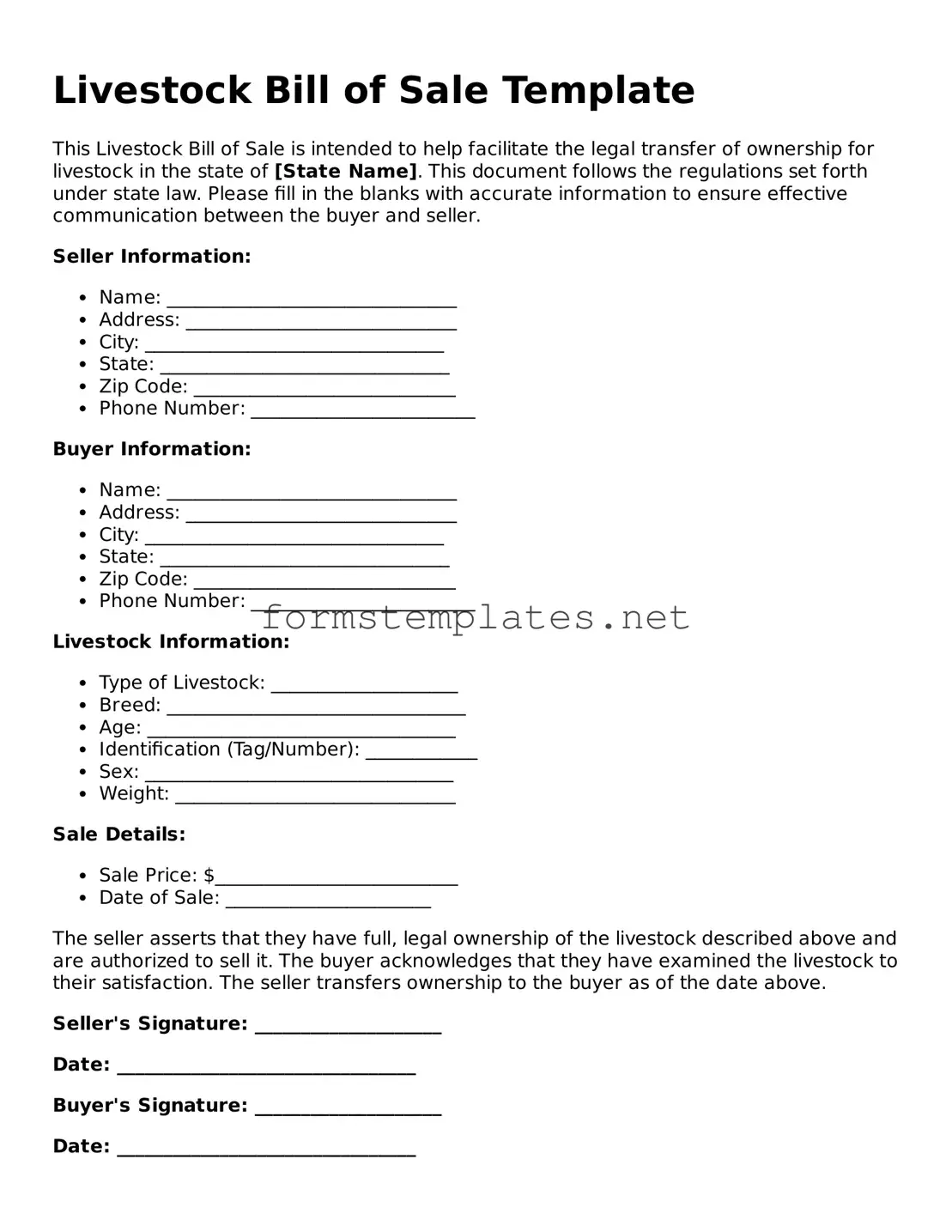Livestock Bill of Sale Template
This Livestock Bill of Sale is intended to help facilitate the legal transfer of ownership for livestock in the state of [State Name]. This document follows the regulations set forth under state law. Please fill in the blanks with accurate information to ensure effective communication between the buyer and seller.
Seller Information:
- Name: _______________________________
- Address: _____________________________
- City: ________________________________
- State: _______________________________
- Zip Code: ____________________________
- Phone Number: ________________________
Buyer Information:
- Name: _______________________________
- Address: _____________________________
- City: ________________________________
- State: _______________________________
- Zip Code: ____________________________
- Phone Number: ________________________
Livestock Information:
- Type of Livestock: ____________________
- Breed: ________________________________
- Age: _________________________________
- Identification (Tag/Number): ____________
- Sex: _________________________________
- Weight: ______________________________
Sale Details:
- Sale Price: $__________________________
- Date of Sale: ______________________
The seller asserts that they have full, legal ownership of the livestock described above and are authorized to sell it. The buyer acknowledges that they have examined the livestock to their satisfaction. The seller transfers ownership to the buyer as of the date above.
Seller's Signature: ____________________
Date: ________________________________
Buyer's Signature: ____________________
Date: ________________________________
This document serves as a legally binding agreement and should be retained by both parties for their records.
